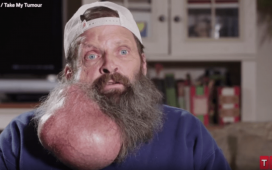When the Bond movies began nearly 60 years ago under the stewardship of producers Harry Saltzman and Cubby Broccoli, and with Sean Connery wearing the tuxedo to absolute perfection, it was practically a novelty that they could churn out a new adventure every 12 months. In fact, the first five movies in Connery’s tenure were released in just as many years. At the time, it looked more akin to how, say, MGM could produce six Thin Man movies in the 1930s and ‘40s. But the thing about Bond is that he lasted longer than that—longer than anyone, even old Hollywood hands, speculated was possible.
This is because Broccoli and Saltzman were among the first to figure out a character can be bigger than any actor playing him. They tried once to recast Bond two years after Connery and failed to win over audiences in On Her Majesty’s Secret Service (1969). They tried again after Connery left a second time, and they succeeded via Live and Let Die (1973).
Since then, the Bond franchise has become a near constant in the zeitgeist, with audiences generally conditioned to accept that no one actor has definitive claim over the character, and that as the credits always say, “James Bond Will Return.” Some 007 movies can be better than others, and some 007 actors can even be rejected at the box office, but eventually the character will always be reinvented and back in theaters. For much of the 1970s, ‘80s, and ‘90s, there would be occasional speculation about when we, as a society, would “outgrow” James Bond. But at a certain point, the media conversation stopped being when Bond “should end” and became what Bond “should be next.”
Now with the advent of No Time to Die, the franchise seems to directly challenge those expectations again with its shocking story and surprise twists, all of which seem to challenge the very idea of who James Bond is. Nonetheless, the character’s elusive and defining energy remains the same, warts and all, and to date Eon still has no plans to do more than keep producing James Bond’s next adventure… years from now.
For six decades, Bond has been the center of Eon Productions’ world. Which might be the secret to his longevity. While Saltzman bowed out of the Bond film business after The Man with the Golden Gun (1974)—and after business decisions he and Broccoli disagreed on, including Saltzman’s desire to produce more than just Bond movies—James Bond remained a family business. Until his death in 1996, Broccoli had a firm hand on the franchise, letting his last professional act be the casting of Pierce Brosnan as 007.
Afterward, his daughter Barbara Broccoli and stepson Michael G. Wilson stepped into the role of shepherds without missing a beat, producing Brosnan’s first Bond flick, GoldenEye (1995), on their own, and every one of them which came next. While until very recently (like the last three Bond movies) the Broccolis avoided the influence of “auteur” directors, with Cubby even famously turning Steven Spielberg down on For Your Eyes Only (1981), the family itself has always maintained a firm creative vision on the Bond franchise every time out.












